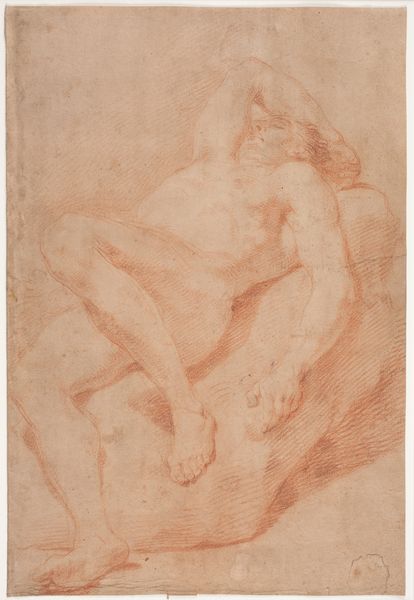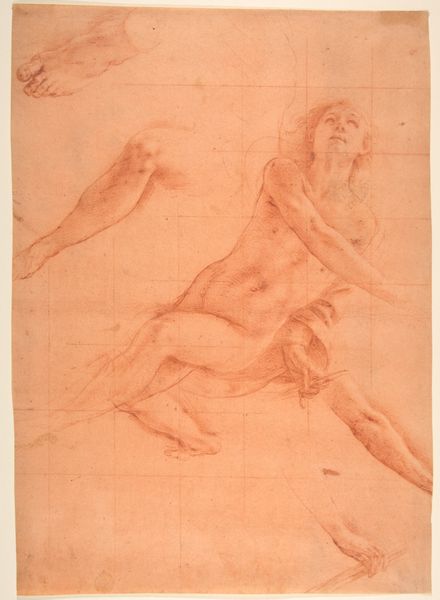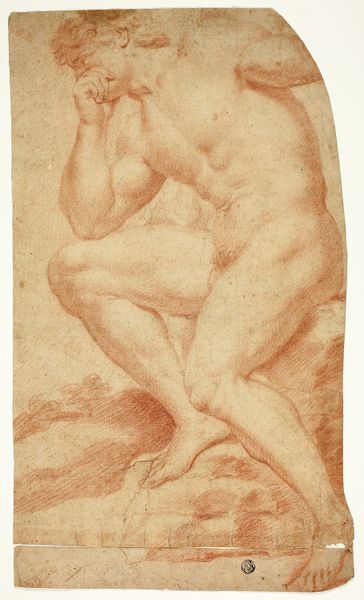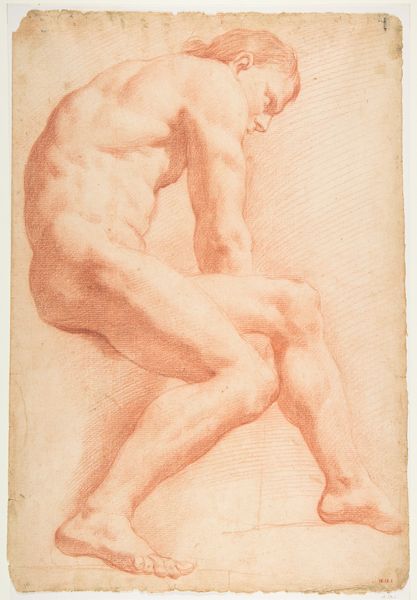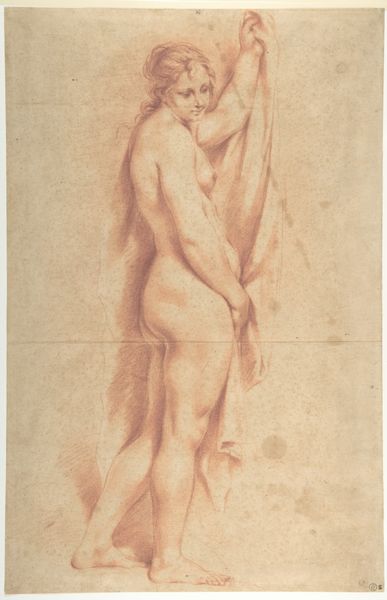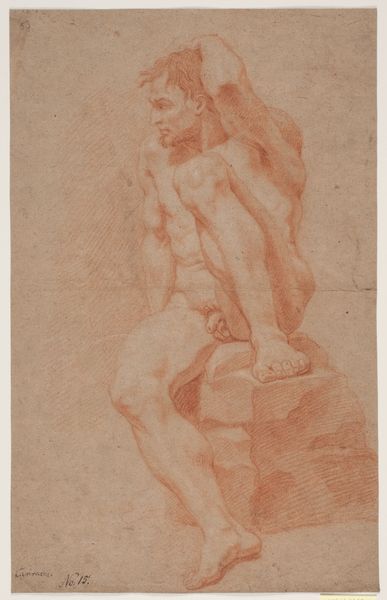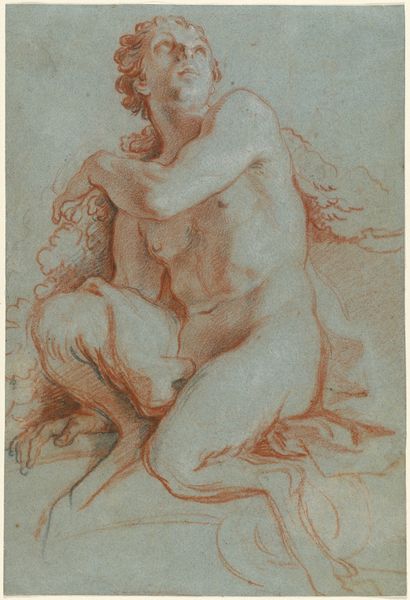
drawing, pencil, charcoal
#
portrait
#
drawing
#
charcoal drawing
#
pencil
#
portrait drawing
#
charcoal
#
italian-renaissance
#
nude
Dimensions: 387 mm (height) x 266 mm (width) (bladmaal)
Curator: Look at the striking way the red chalk gives a feeling of warmth and vibrancy to the work. Editor: Indeed. I'm immediately struck by the sheer physical presence of this figure. It's rendered with such an attention to the muscular detail and yet the pose feels very natural, almost casual. Curator: What we have here is "Siddende ung nøgen mand," or "Seated Young Nude Man," a drawing rendered between 1550 and 1560, and attributed to Pellegrino Tibaldi. It’s a study, quite possibly for a larger painted work, executed in pencil and red chalk, a popular medium for preparatory drawings at the time. Editor: Knowing it is a study brings even more to my perspective. Observe how Tibaldi uses the chalk to explore light and shadow. It looks so sculptural! Curator: It speaks volumes about artistic practices in the Italian Renaissance. Drawing was foundational, a crucial stage in the creative process, which often involved workshop collaboration. We can think about the role of materials and labor involved in creating the artwork and the ways that apprentices and assistants worked alongside the master artist, thus blurring the distinction between craft and so-called "high art". Editor: Very interesting how you address production means! Speaking formally, consider the impact of the medium on the surface, every line carefully placed to describe form. This mastery emphasizes line, contour, and the play of light and shadow across the figure's body, and really animates the composition as a whole. The subtle tonal variations add to the work's sense of depth and realism. Curator: What strikes me most is the figure’s very humanity; despite the idealised form. He isn't posed as a heroic figure; he sits with his hand casually resting on his knee. It prompts us to reflect on contemporary ideas around gender, masculinity, and their artistic representations. Editor: Looking closely reveals the tension in this dynamic between naturalism and idealization; It reminds us of the intellectual energy during that period, where artistic interpretation often walked hand-in-hand with underlying cultural and philosophical notions. Curator: I am constantly impressed by what material examination of a historical work may provide. Editor: And my interest lies in the formal elements' timeless appeal, which speaks volumes about our perceptions.
Comments
No comments
Be the first to comment and join the conversation on the ultimate creative platform.

